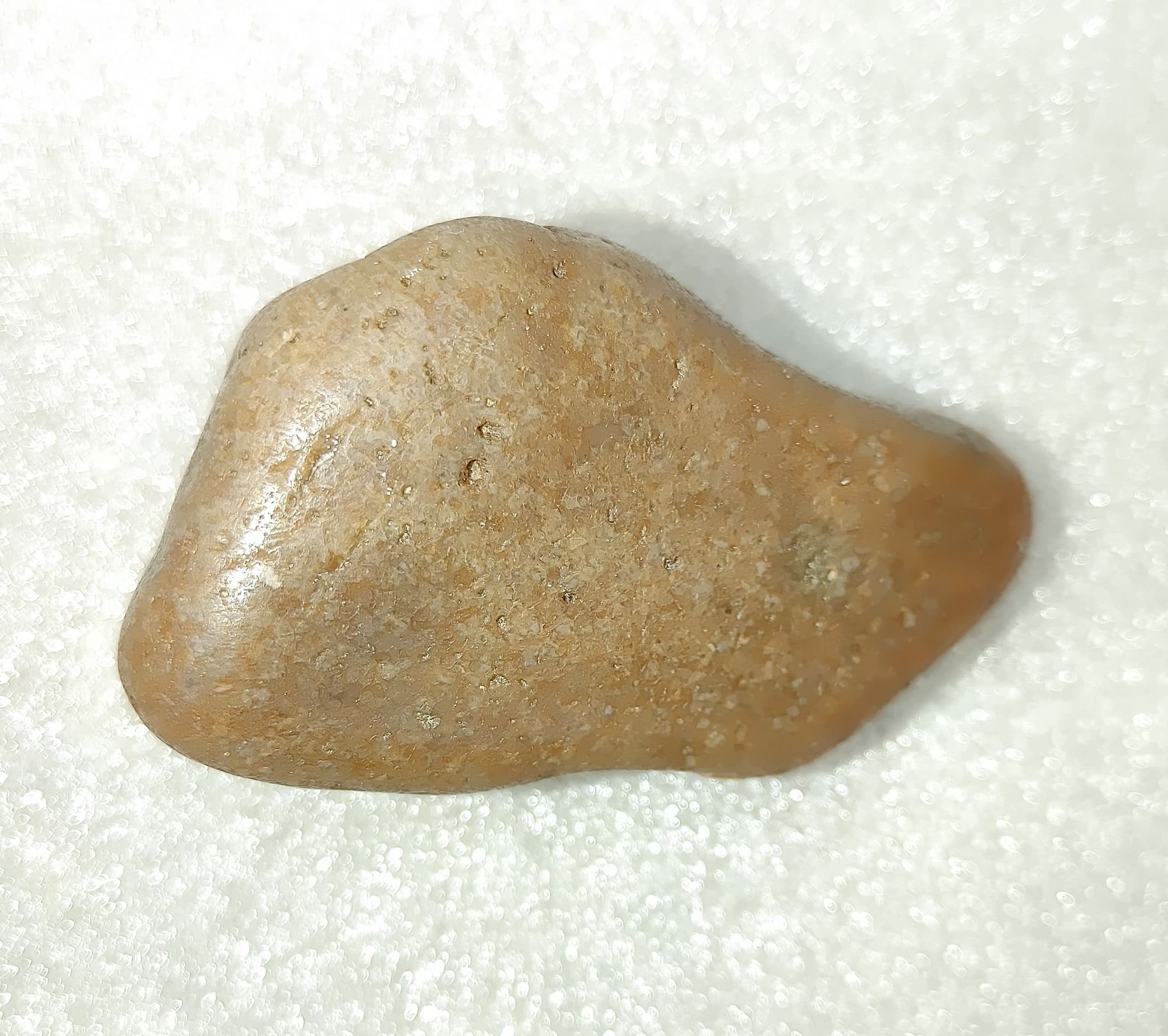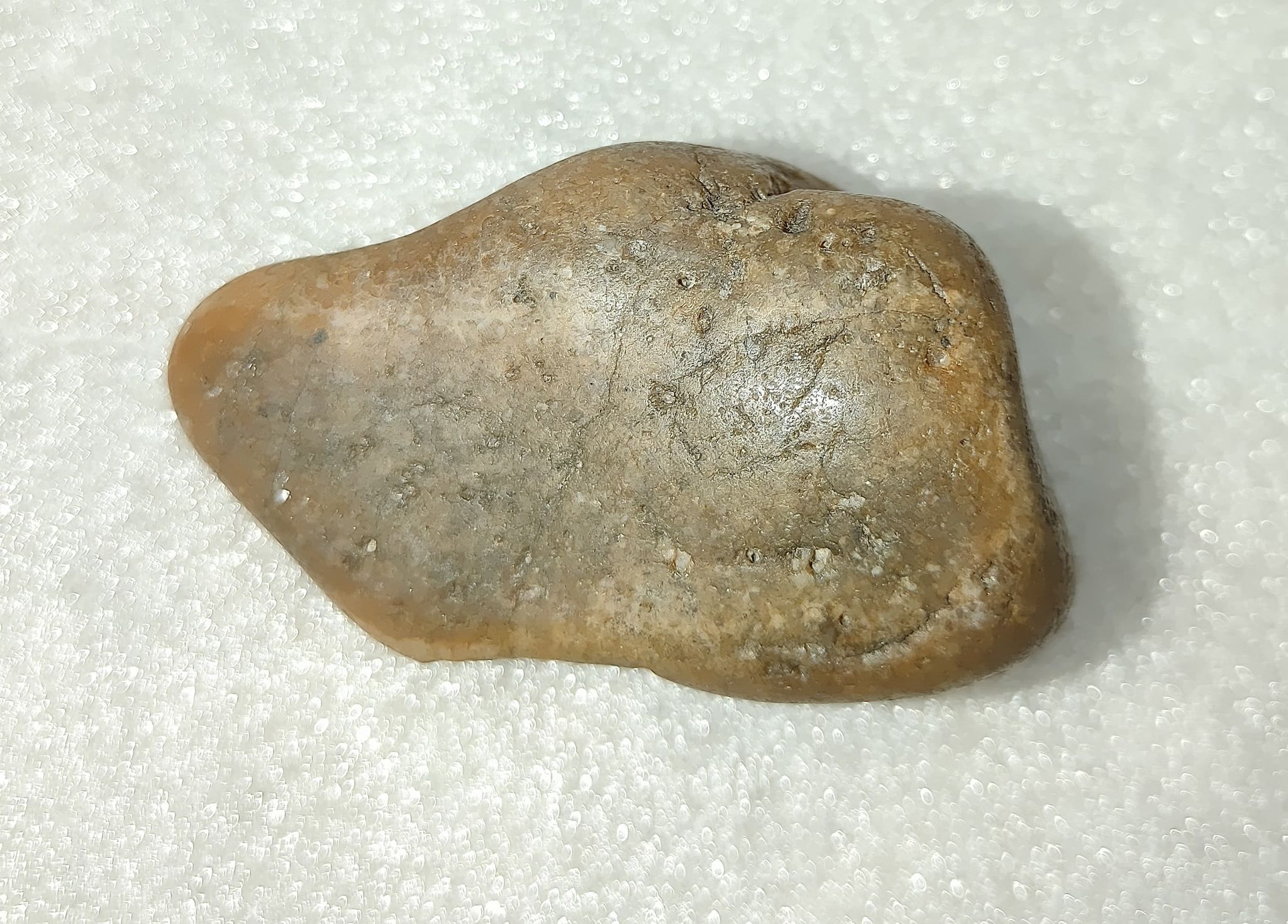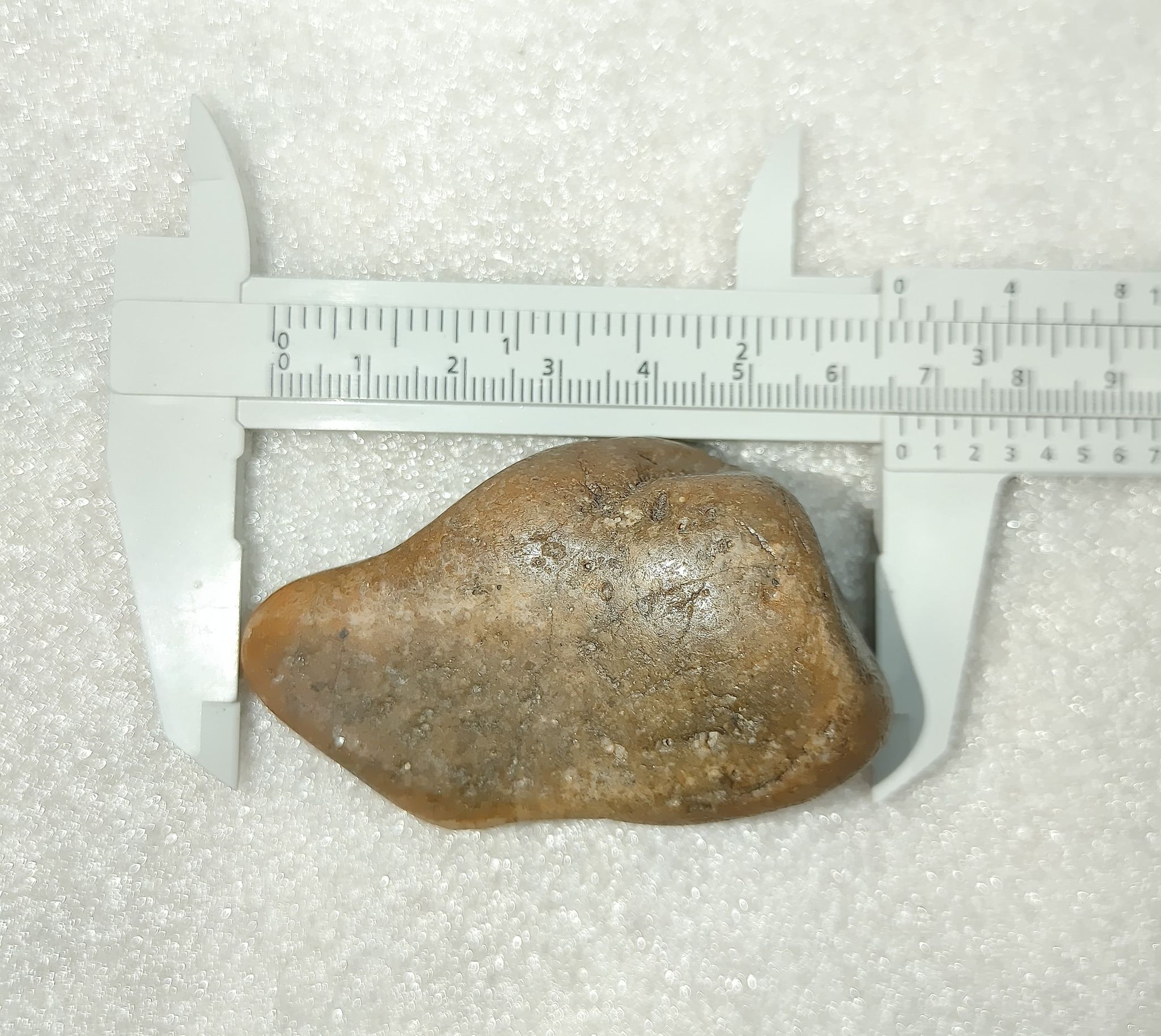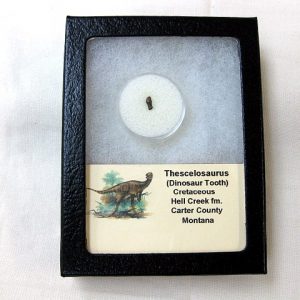Description
- Dinosaur Gastrolith “Gizzard Stone”
- Jurassic Age
- Morrison Formation
- Utah
- See Photo for Size Reference
These Gastroliths were found in the Jurassic of Utah along with Dinosaur remains. These stones were swallowed by the Plant-Eaters to help grind up the fibrous plants that made up their diets, much like modern birds do. Commonly called “Gizzard Stones” these rocks were worn smooth by the constant tumbling/grinding action taking place inside the dinosaur’s digestive system. These gastrolith stones are not typical of the native stones found in the bone bed area, lending evidence that these are truly gastroliths that were ingested by the dinosaurs in another area rather than river tumbled rocks.
Among living animals, gastroliths are most commonly found in birds, especially ground-living birds like chickens and ostriches and active swimmers like penguins, crocodiles, seals, and toothed whales. Extinct animals that have been found with definite gastroliths in their bodies include plant-eating dinosaurs like sauropods, primitive ceratopsians, and ostrich-mimics, marine reptiles like plesiosaurs and (rarely) ichthyosaurs, and crocodilians. These animals mostly fit into two categories: plant-eaters (herbivorous dinosaurs and many birds) and animals that swim (all the rest).
Definite gastroliths have been found in the rib cages of sauropod dinosaurs, primitive ceratopsians such as Psittacosaurus, and in toothless theropods like ostrich dinosaurs and the feathered Caudipteryx. All of these animals seem to have been herbivores. Perhaps they all had gizzards, like birds, and used gastroliths to grind their food. To test this idea, paleontologist Oliver Wings fed different kinds of rocks to ostriches to study the function and characteristics of gastroliths. He found that in ostriches, gastroliths make up between one-fifth and one-half of the stomach contents and about 1% of body mass. Similar amounts of gastroliths have been found with Psittacosaurus, Caudipteryx, and the ostrich dinosaurs, so the hypothesis that these dinosaurs used gastroliths to aid their digestion is supported. However, in all cases of sauropod gastroliths, the rocks would have been less than 0.1% of body mass — too little to be an important part of the digestive process. Furthermore, the vast majority of sauropod skeletons are found without gastroliths. So the presence of gastroliths in some sauropods is mysterious.






